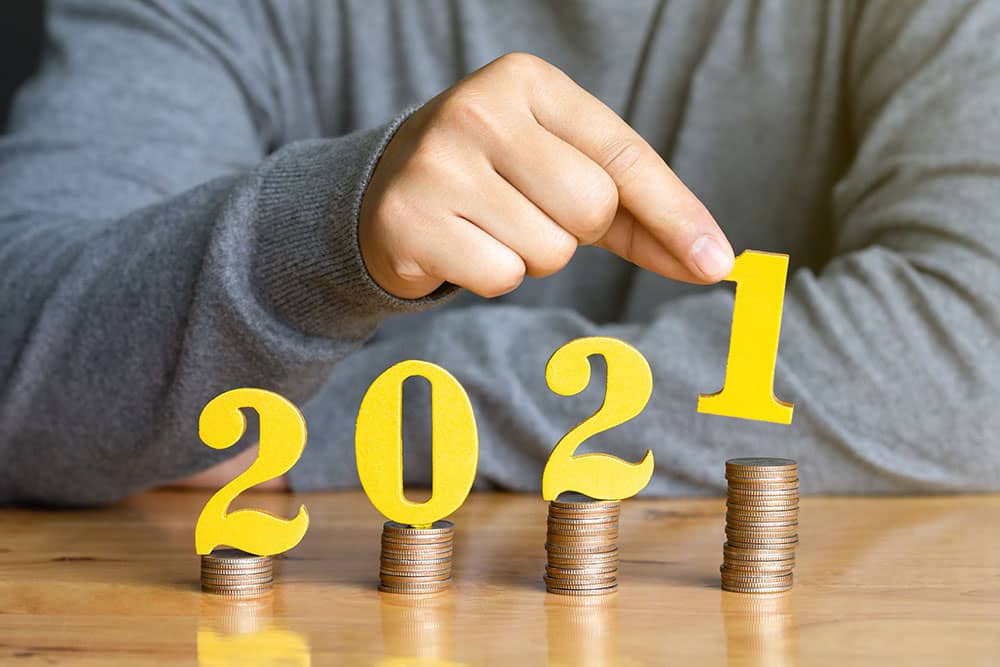The first JobKeeper instalment was disbursed a year ago, in May 2020. This wage subsidy called JobKeeper was part of the Federal Government’s aid to businesses that COVID-19 severely impacted, causing them to halt operations. JobKeeper would later become the most significant fiscal initiative to have ever existed in the country’s history.
Australia is fortunate enough to have emerged from the effects of the pandemic better than some countries. However, the bleak economic outlook was quite noticeable. The Treasury, along with other reputable sources, warned Australians that there could be an economic recession. And it quickly materialised with unemployment possibly reaching about 15%.
While 15% may seem a small figure, it is equivalent to two million Australians. With this potential unemployment rate, the Government was under tremendous pressure. Otherwise, it would have been the same as the country losing massive GDP on important sectors, especially mining, construction, and agriculture.
“Australia is Coming Back”
Now, let us fast forward to the present time. Treasurer Josh Frydenberg recently delivered his third Budget. The Australian economy has successfully demonstrated its resilience. One of the indicators is economic contraction, which refers to the decline in GDP output. Although there were fears of a poor performing labour market, Australia’s economy contracted only 0.2%. As for unemployment, it increased to 6.9% in 2019-20. However, this year, it is expected to fall to about 5.5% and perhaps even up to 4.5%.
Is this resiliency due to good luck, or can we acknowledge the Government’s proper pandemic management? Luck certainly played a part. Let’s not forget that the Budget has gained from iron ore prices, which have increased four times more than the projected value in 2020. However, luck can only do so much, and sometimes, we need to create our own fate.
The economic recovery of the country is mainly due to the measures introduced by the Government in 2020. These measures were quickly implemented at such a large scale, allowing Australia to manage not only the ongoing health crisis but also the economic fallout.

The Cash Boost Receivers
According to the figures above, it is clear that women are among the winners in the Federal Budget 2021. In total, the Government has offered $3.4 billion for upholding women’s dignity, respect, justice, and equal opportunity.
Apart from women, other groups will receive specific incentives. Check if you are a part of these groups below:
- Single Parents: If you are a single parent, you could have a chance to purchase a house by providing a 2% deposit; the Government will cover the remaining 18%. About 10,000 single parents will benefit from this program under the Family Home Guarantee.
- First Home Buyers: Another 10,000 people have the chance to purchase their dream home by simply providing a 5% deposit. The Government is also expanding the opportunity to buy a house by allowing the citizens to use more of their super funds. The First Home Super Saving Scheme previously provided $30,000 to eligible homebuyers. This amount has increased to $50,000.
- Builders: Aside from homebuyers, builders are also on the winning side of the Budget. With a $15 billion budget for road and railway line building and expansion, the industry will surely receive the help they require. About 20,000 jobs are said to open due to this incentive.
- Low and Middle-Income Earners: For those who earn less than $125,000, there’s good news. The Low and Middle Income Tax Offset (LMITO) is extended for one more year. That means people included in these income brackets will have a $1,080 tax adjustment. Due to the extension, individuals will get up to $7,020 of tax cuts while couples receive up to $14,040. That’s because the LMITO has been around since 2018 and will continue until 2022. Frydenberg said that more than 10 million people would benefit from the extended tax cut.
- Farmers: Another group benefiting from the Federal Budget includes farmers in the country. Farmers can claim the full value of recently purchased assets until tax time in 2023. This extension is part of the Government’s efforts to help strengthen the private sector.
- Agricultural Workers: Agricultural showmen and women will receive $4.3 million. It is a way for the Government to support costs relevant to participants of the agricultural shows. The Showmen’s Guild Fees 2021 will be put on hold.
- SMEs: Small and medium (SME) businesses are given tax incentives, especially those that suffered from the aftereffects of COVID. One such incentive is the reduced corporate tax rate, which was initially 30% and will soon be 25% by 1 July. It’s also announced that the small business loan scheme will be extended. Last year, over 45,000 SMEs were given access to low-cost financing. Many small businesses dread the ATO’s debt recovery action. Still, the Government has assured SMEs they will receive the help they require for resolving disputes.
- Retirees: More flexibility will be offered to superannuation, including removing the $450 minimum income threshold. That means you will receive super even if your income is less than the amount mentioned. The pension loan scheme now has a longer deadline. It also helps singles and couples get a lump sum of $12,000 and $18,000 approximately.
- Retired Women: This scheme will facilitate closing the gap between men and women’s retirement money. It’s a solution to the complaints involving women who had to get part-time jobs while caring for their children. However, those women were not given equal opportunity to super contributions. But it’s something that specific changes are focusing on. Additionally, there’s now the ability to contribute $300,000 at the maximum. This update is beneficial, especially for women who choose to downsize as they retire.
- Regional Communities: A new biosecurity package will be worth $371 million to protect regional and agricultural communities. This pledge is believed to improve border screening control and the country’s ability to combat a possible pandemic or outbreak. The biosecurity system keeps agrarian exports, amounting to $50 billion. It is also essential to fight for 1.6 million jobs against threats, including COVID and the African Swine Fever.
Other professionals that benefit from the Budget changes are:
- Smaller excise taxes for distilleries and breweries, removing excise tax on the first $350k worth of alcohol
- Aussie drinkers gaining from the probable lower costs of beer
- Health services to receive $1.9 billion for the vaccine rollout for a total of $20 billion
- $1.5 billion for COVID-related services in the health industry, such as tracing and telehealth
- Apprentices to receive doubled JobTrainer funding of $2.7 billion
- Every educator benefiting from the increased funding for preschools ($2 billion) and universities ($19 billion)
- Employee Share Schemes (EES) without the end of employment taxing point to help CEOs and executives retain and attract more employees
- Video game developers to receive a 30% refundable tax offset for their game expenditures
- The tourism industry, specifically for domestic travels with $1.2 billion added funding; of which $274.5 will go to zoos, aquariums, and travel agents to support their businesses
- Cinemas to receive $20 million pledged support from the Government
The Great Challenge
Although the Government has supported the economy and prevented major issues, some monetary concerns have surfaced:
- The Government’s COVID-19 economic support package has reached almost $300 billion.
- Because of the enormous support package for the country’s economy, the Budget’s 2020-21 underlying cash balance is -$161 billion.
Budget repair is still a problem, but it is surprisingly manageable. The primary forecast for the country’s underlying cash balance was -$213.7 billion. However, because many Australians are now resuming working and running their businesses, the deficit this year is more than $52 billion lower than expected.
Currently, the Government is focusing on creating efficient expenditure measures, particularly on a variety of economic and social challenges. These include:
- Mental health
- Training
- Skilling
- Child care
- Aged care
- Community resilience
- Defence
- Infrastructure
Despite these plans, there are still risks that lie in the effectiveness of COVID-19 management. In October 2020, Treasury predicted that border restrictions would be eased by the end of December 2020. Unfortunately, those optimistic projections did not happen, cancelling the recovery of the tourism industry and the entry of international students. They will have to be recalibrated over 2022.
One more thing is that Australia needs to regrow quickly. Growth in the economy is essential to restoring Budget and funding for the structural expenditure programs in the country.
Federal Budget 2021 Insights
A business-led recovery of the Australian economy is considered the best approach towards the country’s return to growth. Businesses should be at the centre point, especially with a $161 billion deficit for 2021-22. The net debt is set to increase to $617.5 billion, which is 30% of the country’s GDP. Meanwhile, the nominal GDP growth is 3.5% for 2021-22, while the real GDP is 4.25% for the same period.
Here are the tax measures at a glance:
- Both low and middle income earners will get up to $1,080 (individuals) and $2,160 (couples).
- About 99% or more Australian businesses can write off the full value of an eligible asset if purchased by 30 June 2023.
- The patent box tax regime will soon be introduced to encourage medical and biotechnology patents in the country.
After the announcement of the Federal Budget 2021, it is clear where the Government’s sights are focused: increasing more employment opportunities, especially for women. In fact, the Government looks forward to seeing more women in the workforce in various fields, such as science, technology, engineering, maths, and trade.
Frydenberg has confirmed enhanced training support for women who want to be a part of non-traditional trades. About 5,000 more training facilities will open all over the country, and 2,700 more will be dedicated to academies for Indigenous girls. That way, they will finish school and get a job in the workforce.
Some women may not have another chance to return to their jobs, which is why the Government has guaranteed a $1.7 billion budget for childcare. According to the Treasurer, this initiative will help reduce the costs of childcare-related services. That way, both low and middle-income families will be able to afford them. The pledged value will aid approximately 250,000 families in the country. They are expected to have saved an average of $2,200 every year.

Who’s Missing Out?
Not everyone is benefiting from the Budget, though. Some of the so-called losers are:
- Australian oceans with only $100 million worth of funds
- Asylums where the Budget of over $464 million will go to domestic detention
- Car buyers where prices of cars are on an increasing price trend, especially with used vehicles
During the announcement of the Budget, Treasurer Frydenberg gave certain clues about the Government’s plan to reduce its reliance on international businesses. It’s believed that those hints point to China, with which Australia has a growing tension. That is why it comes as unsurprising that the Budget included $1.5 billion for manufacturing. Production on the Australian shores is highly encouraged, and dependency on other countries is persuaded against.
The Supply Chain Resilience Initiative will also have $107.2 million in funding to close the country’s gaps between the supply chains. It is an important initiative that will help Aussie manufacturers.
Despite the tumultuous events due to COVID, the Government is demonstrating it is prepared through these challenges. The Federal Budget will take time to be fully implemented. However, it is safe to say that the plan will help individuals and businesses until economic recovery is finally well within our sights.


